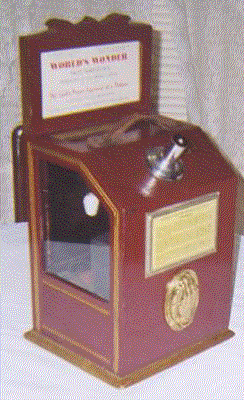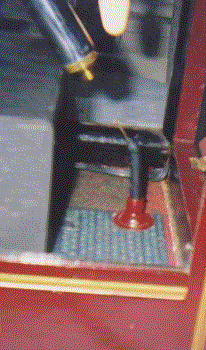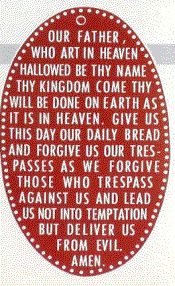This coin machine was on display at the Chicagoland Antique Advertising, Slot Machine and Jukebox Show, about 10 years ago.
Naturally, I had to try it out. You drop a nickel into the viewer, a light comes on, and there before your eyes you see the Lordís Prayer on a pinhead. Thatís right, 65 words, 254 letters, and 14 punctuation marks all carefully engraved on a pinhead which is forty-seven one-thousandths of an inch in diameter. Every word and letter is spaced perfectly and can be read as though it were written on the page of a book. When created, the work was considered to be the most prodigious feat of engraving ever accomplished.
The engraving was originally done by Charles H. Baker of Spokane, Washington, a highly technical engraver in the Bureau of Engraving and Printing. It took Mr. Baker three years to engrave the pin.
To his excitement, the pin was featured at the 1915 San Francisco Exposition for six months and was viewed by over 250,000 people at the Expo. It was considered to be one of the most impressive exhibits at the Exposition and was even the subject of one of Ripleyís Believe It or Not newspaper pictorials.
The pin was then placed in a machine in the 1920ís so that the public could have the opportunity of viewing it; originally for a penny and later for a nickel.



